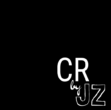The cover letter is the single most important aspect of your written application and what makes or breaks your chances in receiving a clerkship. Over the two years that I applied as a prospective clerkship candidate, my cover letter was what turned my clerkship rejections into interview opportunities.
So, what did I change? While each cover letter was tailored to each law firm, here are some guidelines I followed when I drafted my application.
Over the two years that I applied as a prospective clerkship candidate, my cover letter was what turned my clerkship rejections into interview opportunities.
Guideline 1: Cover your bases
The way that each student drafts their cover letter is different, but generally I have followed a structure which includes the following elements:
-
Identifying capabilities of the firm which appeal to you;
-
Explaining your skills and/or attributes that make you a sought-after candidate; and
-
Evidencing any relevant professional, extracurricular and volunteering experiences
Although this is my go-to structure, it changes when there are overlaps between the content in my cover letter and the application questions.
For example, if one of the application questions is “Why do you want to work at this firm”, I would take element 1 from my cover letter and use it as my answer. I would then replace that empty section in the cover letter with an additional quality I possess or how I developed a passion for corporate law. The same works vice versa – Who says you can’t copy and paste in your cover letter?

1. Identifying capabilities of the firm which appeal to you
This is the most integral section of the cover letter, where you draw on all the research you have conducted to convince the reader why this firm is the right one for you. Most students who have not progressed past the written application phase often neglect this section or make the mistake of including all things tangibly relevant to the firm. To stand out, you should be selective of what aspects and achievements of the firm to include. Elements of the firm that should be included in your cover letter must either support your values and interests or link to your strengths, skills and expertise in some way – whether it links to your aspirations to work at a top-tier law firm or your aptitude for innovation, make sure it is relevant.
To stand out, you should be selective of what aspects and achievements of the firm to include.
The aspects that you focus on in your cover letter does not need to be different from others. It just needs to genuinely connect with what is written in your application. Here are some aspects of the firm that I included in my cover letter.
-
The firm’s vision and values
-
The firm culture that you experienced at information evenings or other events
-
Chamber rankings, Legal 500 rankings and other prestigious rankings the firm holds
-
Notable awards that the firm has won relevant to your area of interest or skillset
-
Major transactions relevant to my area of interest that the firm has worked on
-
Recent firm-wide mergers or acquisitions that have occurred
-
An interesting conversation you had with a firm representative (name drop optional)
-
Technological initiatives that the firm has implemented or is in the process of doing
When you include specific achievements or attributes of the firm, make sure you explicitly mention in your cover letter why the specific achievement or attribute matters to you and what it shows about the firm which makes you excited to join as a prospective team member.

2. Explaining your skills and/or attributes that make you A sought-after candidate
To master this section of the cover letter, you need to know that skills and attributes are two separate notions. Attributes are qualities that you naturally possess which form part of your personality. These differ from your skills, which are things you have picked up as a result of professional employment, volunteering or schooling. Below are some examples of each:
Attributes: innovative, proactive, motivated, enthusiastic, ambitious, strong work ethic, self-awareness, logical, adaptable
Skills: strong communication, judgement, organised, commercial awareness, global acumen, technical competency
The number of skills and/or attributes you want to demonstrate in your cover letter is your decision. As a guideline, each of my cover letters had a total of 4 traits (a mixture of skills and attributes) that showed why I was a strong candidate for the position.
When selecting your skills and attributes, there are two things I would consider:
1. The goal is to impress
The job of the cover letter is to impress. Be smart when selecting the skills and qualities that match you and avoid selecting traits that the firm would expect you to have. If you think about it, skills such as having strong teamwork or being a team player can be easily inferred from your professional or extracurricular experience so it may be better to avoid using these generic traits in your cover letter.
Instead, consider selecting broad, positive attributes that also infer other great qualities. A great example is “proactiveness”. The employer could associate your ability to take initiative with other positive traits such as being enthusiastic, communicating well and having pride in your work.
2. No one will believe you if it isn’t backed up
Having stand out traits are one thing, but it means nothing to the employer if these are not backed up by relevant experiences. The tip here is to be both a visionary and realist: include inspirational skills and attributes in your cover letter but also make sure it can be reasonably inferred by your experience. This may sound hard, but it really isn’t.
If you’ve worked at an international firm, it means you have a strong global mindset. If you were involved in a student organisation, it means that you are proactive and innovative. To the reader these are both realistic and attractive traits – how great is that?

3. Evidencing any relevant professional, extracurricular and volunteering experiences
By your penultimate year, you may have worked at a few different places – great if you have some legal expertise under your belt but not necessary. What is important here is choosing particular elements of your experiences that best highlight the skills and attributes you have chosen for yourself.
-
While you want to include professional experiences wherever necessary, you want to avoid overstating such experiences. If you have worked at multiple professional firms where you completed similar activities, give priority to the most well-known firm and go into detail on particular matters or projects that you were involved in. Employers are also looking for substance in your applications.
-
If you have some extracurricular or volunteering involvement, don’t hesitate to include these experiences over professional ones if the experience reinforces the same traits. Variety is your friend – you want a mixture of professional, extracurricular and volunteering experiences. Why? Because it shows you are a well-rounded person.
-
If you have a particular unique experience, whether you played an instrument for a long time, power lifted or were on the national team for any sport, ALWAYS refer to these experiences in your cover letter and written responses. Employers are looking for exceptional candidates and your unique experience will be a favourable point of difference.
Variety is your friend – you want a mixture of professional, extracurricular and volunteering experiences.
Guideline 2: Connect your content
In the section above, we have delved into the three core aspects of the cover letter and how to execute them well. While I have referred to them as separate points of discussion, a strong cover letter links these elements seamlessly. I’m not just talking about a connecting sentence between paragraph as you discuss each element throughout your cover letter – each of your paragraphs should aim to contain all three aspects discussed above.
Identify your quality, back it up with relevant experiences and also draw upon a particular firm quality that links these elements together.

Guideline 3: Dress your cover letter the same as you would at an interview – formal
Like the law firm, a clerkship cover letter should be clean and professional. A proper formatted cover letter header would send the right signals to the assessors.
Here is a template header that I have used.
[Name]
[Mobile]
[Email]
[Date]
[Recruiter’s Name]
[Position]
[Firm Name]
Dear [Recruiter’s Name]
Re: Application for Seasonal Clerkship with [Firm Name]
A few simple pointers for formatting cover letters:
Length: The cover letter is no longer than a page. While you can narrow margins, I would recommend against this. Note that a typical “clerkship” cover letter that I have seen is a lot denser than standard cover letters you see online.
Presentation: Write in paragraphs and “justify” your text.
Address: On the application page, there is often a reference in the job description to direct the cover letter to a particular recruiter. Make sure you spell their name correctly and refer to them with the correct prefix (Ms or Mr). If there is no name, refer to them as Sir/Madam.
Sign off: Have a line thanking them for considering your application, sign off with “Yours Sincerely” and your name.
To learn how to create a solid resume to pair with this cover letter, read this article.

